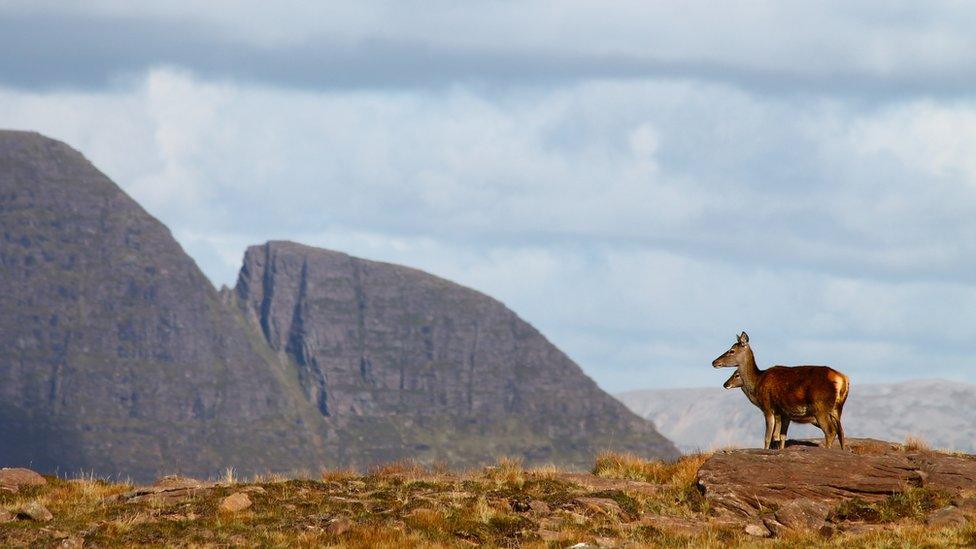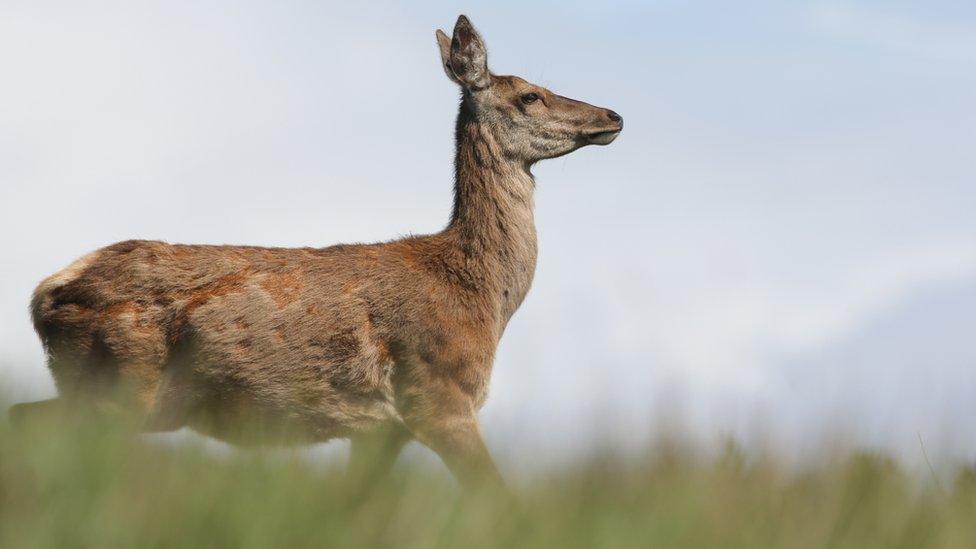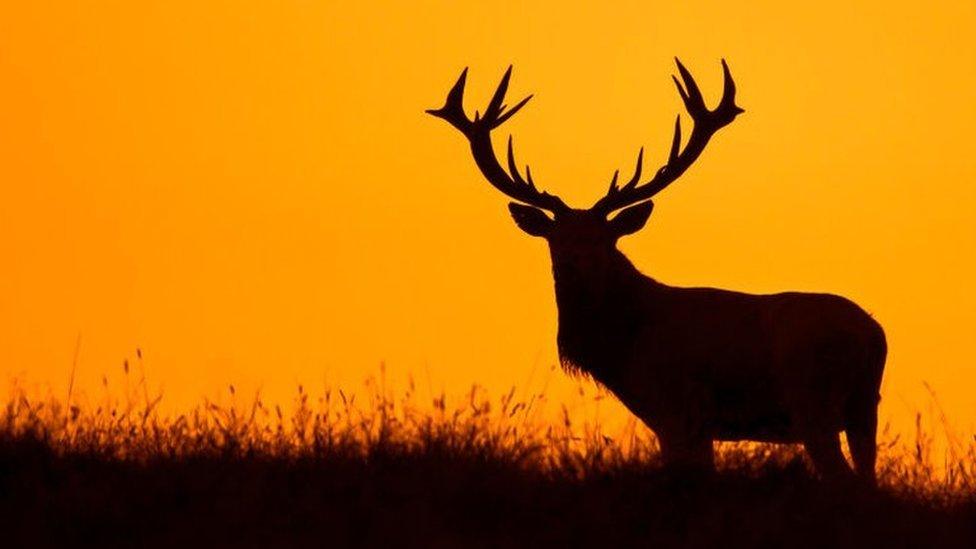Why are large numbers of red deer being killed?
- Published

Residents of the community-owned South Uist Estate in the Western Isles were asked to vote on whether all the estate's 1,200 red deer should be killed.
The move came after Scotland's nature agency, NatureScot, had 160 red deer shot on the Loch Choire Estate in East Sutherland, and follows other large culls over the years.
But why are red deer, one of Scotland's most iconic animals, being targeted?
What are red deer?
Britain's largest deer takes its name from the red-brown colouring of its coat. Adult males, known as stags, can measure over a metre tall at the shoulder.
From September to November they fight for females in what is known as the rut.
Recent estimates suggest there could be up to 400,000 red deer in Scotland.
It is thought that Scotland could be home to almost one million deer in total. The other species are roe, fallow and sika.
Public agency Forestry and Land Scotland said the numbers of deer had doubled since 1990.
Red deer are celebrated in the arts, perhaps most famously in Sir Edwin Landseer's painting The Monarch of the Glen.
Stags also appear in regimental cap badges for the Seaforth Highlanders and Gordon Highlanders, on the crests of several Scottish clans and on the badge of Ross County FC, who are nicknamed The Staggies.
And red deer appear to be held with affection by the public. A survey in 2013 on public perceptions of the deer suggested they were seen in a positive light.
How many are shot?

More than 100,000 wild deer are shot in Scotland every year, according to Scottish government figures, external.
This produces an estimated 3,000 tonnes of venison, worth about £7m.
There are different forms of deer management, including recreational hunting of deer on sporting estates under the supervision of deer stalkers.
Licensed shoots are also carried out to prevent numbers exceeding available food in an area. Deer eat grasses and shrubs, like heather.
Culls have also taken place to stop deer harming natural habitats, such as native woodlands. Forestry and Land Scotland previously warned that up to 150 million young trees were vulnerable to damage by deer, and the cost of deer grazing on trees amounts to about £3m a year.
Fences have been used in the past to protect blocks of forestry, but this solution is costly - almost £5m a year is spent on fencing - and there have been concerns about the impact on other wildlife.
NatureScot said deer were shot at Loch Choire Estate earlier this year to protect a designated Sites of Special Scientific Interest.
Why was there a call for a South Uist cull?
Community company Stòras Uibhist, which manages the 93,000-acre South Uist Estate, received a petition signed by about 200 residents calling for the cull.
Concerns had been raised about deer carrying large numbers of parasitic ticks, and how the tiny pest can go on to spread Lyme disease to humans through an infected bite.
Uist - North Uist, South Uist and Benbecula - has a rate of Lyme disease 40 times higher than mainland Scotland per unit of population, according to research from Glasgow and Liverpool universities.
There had also been complaints about grazing on croft land and the damage the deer do to woodland, gardens and other property.
Stòras Uibhist acknowledged deer numbers have been high, and said it had taken action to reduce numbers.
Is there opposition to large-scale culls?

Over the years, there has been criticism from within the deer management sector.
The Scottish Gamekeepers Association has described previous culls as "aggressive".
It claimed culling South Uist's deer would represent a "symbolic blow" for the last remaining genetically pure red deer in Scotland.
One Highland landowner has also previous criticised culls, saying the large numbers taken affected the quality of Scotland's red deer population.
Animal welfare charity OneKind called for an "ethical strategy" which would allow wild animals to thrive in response to a cull of female deer.
Related topics
- Published21 March 2023

- Published16 March 2023

- Published15 March 2023

- Published31 August 2021